Vampires in Literature: Opera Cloaks, Sparkles, and Prevailing Themes
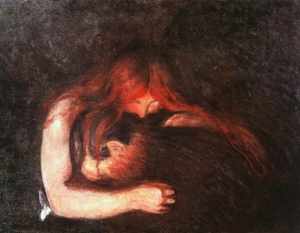
Vampire fiction gained momentum in 2005 and after when Little, Brown and Company published the Young Adult supernatural romance Twilight, a story where the narrator, Bella Swan, falls in love with a vampire, Edward Cullen, and yearns to become a vampire herself. Though the craze has died down, out of the many mythological creatures known, vampires are an enduring, pervasive aspect of Western culture.
The prevalence of literary vampires did not begin with Twilight. Vampire-centric stories are perpetually told and retold. There is no absolute certainty where the line between “old” and “new” vampires should be drawn, though there is certainly a difference between the villainous Dracula and the vampire love interest Edward Cullen.
Ultimately, vampires persist because, regardless if they suck the essence from humans, deer, or carrots, they embody several recurring social conflicts, fears, and structures, as well as recurring themes and how the treatment of these themes alters—or doesn’t alter—over time. Vampires can represent vital, interwoven issues, and said issues include gender, class, religion, and more.
This article contains spoilers for several pieces of fiction, both older and recent. Works with especially detailed spoilers include The Vampyre, Carmilla, Dracula, Let the Right One In, and Twilight.
What is a Vampire?
Before examining the literature, seeing what constitutes as a vampire assists in seeing how versatile these folkloric creatures are. Many possible attributes come with the label “vampire,” from strengths to weaknesses. With this, there have been extensive liberties taken in both older and recent fiction. Here is a list of typical attributes concerning the positives and negatives of vampirism:
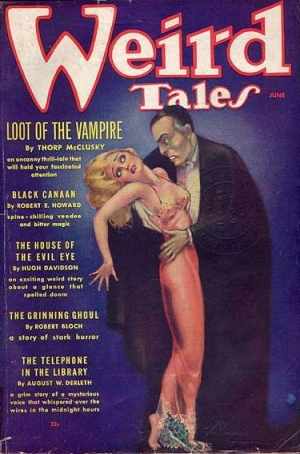
Possible strengths and abilities: super strength; mind control (of both animals and humans); shapeshifting into animals; teleportation; flying; self-healing and regeneration; telepathy or psychic abilities that induce a victim’s hallucinations; telekinesis; extraordinary beauty; immortality
Weaknesses and limitations: sensitivity or an outright aversion to sunlight; repelled by garlic; killed by a stake through the heart; burned by holy water and symbols; cannot enter residence unless invited in; cannot cross running water; cannot touch silver; cannot eat or drink anything besides blood; cannot conceive children; must sleep in coffins; needs to return to native soil before sunrise; no reflection
Despite these many possible traits, the Oxford English Dictionary only defines the “vampire” as “A preternatural being of a malignant nature (in the original and usual form of the belief, a reanimated corpse), supposed to seek nourishment, or do harm, by sucking the blood of sleeping persons; a man or woman abnormally endowed with similar habits. 1
The definition, in order to encompass nearly all instances of fictional vampirism, can perhaps be condensed to this: “A creature who needs to drink blood to live.” Vampires tend to be formerly human, but not in every instance. Fangs are not always present. A killed vampire may return to looking like a corpse, burst into flames, or crumble into ash. The requirements for drinking blood (whether animal blood is a proper substitute; if the victim needs to be drained and killed) and turning humans into vampires differ widely across various literary titles. Furthermore, the causes of vampirism range from undeath to a virus.
The origin of vampires can be just as murky as defining them. Creatures that resemble vampires burrow themselves in the earliest mythologies, such as the vrykolakas of Greek mythology or Lilitu of Sumerian mythology and Lilith of Jewish folklore and The Alphabet of Ben Sira. Suspicions of “revenants,” a person who returns from death, walking the earth caused the superstition-stirred desecration of bodies that were not decayed enough, such as in the case of Arnold Paul. 2 During the Romantic period, John Keats penned poems such as “Lamia” and “La Belle Dame Sans Merci,” which gave the eponymous threats (two ethereal women with the attributes of serpents and fairies) vampire-like attributes.
What is an “Old” or “New” Vampire?
When Meyer’s Twilight reached its height of popularity and gained more exposure with five film adaptations for the entire series, debate stirred on whether the Twilight-verse vampires constituted as “real” vampires. Some irritated with Meyer’s vampires claimed that “Vampires don’t sparkle” or “Real vampires burn in the sunlight.” (Vampires burning in the sunlight is an invention created largely by early twentieth century films, such as Nosferatu.)
Where does one vampire era “end” and another “begin”? Before asserting where to draw the line, it is helpful to view the staples of vampire literature to see how the genre has shifted over the decades.
John Polidori’s The Vampyre (1819)
Polidori worked as Byron’s personal physician, much to his chagrin. However, his stint in this position allowed him the experience of spending three days at Villa Diodati, where a famous storytelling session took place. The company there consisted of Lord Byron, John Polidori, Mary Shelley, Percy Shelley, and Claire Clairmont. From the storytelling, Mary Shelley later created a story that would ultimately become her magnum opus, Frankenstein, or the Modern Prometheus. As well as that, Polidori created a lesser known Gothic novel called The Vampyre.
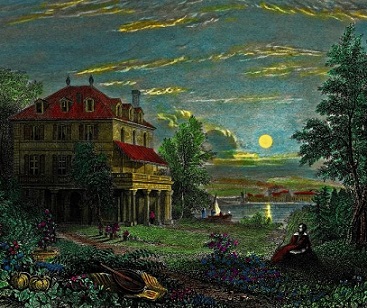
The Vampyre occurs in England. Aubrey, a young man, meets a nobleman named Lord Ruthven. Ruthven, inspired by Lord Byron, is a charismatic vampire who seduces women before draining them of blood. Ultimately, Ruthven marries the protagonist’s sister and kills her on their wedding night.
Lord Ruthven, while initially seeming appealing, is a decadent vampire who finds pleasure in remorseless predation; he kills his lovers and wives. In Polidori’s text, a vampire as not only a villain, but an aristocrat who utilizes his supernatural and economic power to harm those with less means than himself.
The wife-killing bears similarities to the story of Bluebeard, a tale by Charles Perrault that allegedly originated from Gilles de Rais, a wealthy veteran of the Hundred-Year War who returned home after Joan of Arc’s death and began sexually assaulting and murdering children for years before he was caught, executed by hanging, and burned.
Allegedly, de Rais committed these atrocities because he drove his estate into the ground with his ostentatious spending and summoned a demon for assistance. As sacrifice, he murdered children; the children he preyed upon were often of a much poorer status. Gilles de Rais, along with Elizabeth Bathory, represent aristocrats who inspired fiction that revolves around wealth and depravity, such as the Marquis de Sade’s 120 Days of Sodom, written during imprisonment in the Bastille, and later vampire fiction.
The Vampyre, while not as well-known as Stoker’s Dracula, sets up many themes that are recurrent in Gothic vampire fiction.
James Malcolm Rymer and Thomas Peckett Prest’s Varney the Vampire, or The Feast of Blood (1847)
Scholars like A. Asbjørn Jøn credit Varney the Vampire for influencing later vampire fiction, such as Stoker’s Dracula. 3 Varney the Vampire is a penny dreadful, which is defined as cheap serial literature that, back in Victorian times, contained lurid content and literally cost a penny. Interestingly enough, it portrayed Varney in a somewhat sympathetic manner, though perhaps not as potently as later fiction. Varney also displays no vulnerability toward sunlight, garlic, or crosses.
Sheridan Le Fanu’s Carmilla (1872)
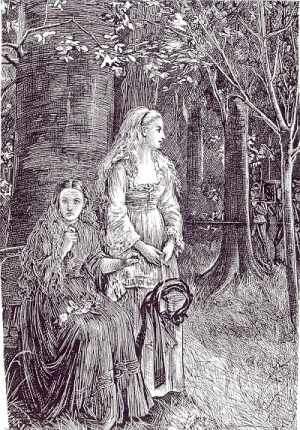
Le Fanu’s Carmilla occurs in Styria, which is located in southeast Austria. A young, lonely woman named Laura lives with her father in a solitary castle. She suffers sleep troubles and longs for a friend. After another young woman’s mysterious death, Laura meets Carmilla, whom she’s dreamed about as a child.
Carmilla starts forcing unwanted romantic advances on Laura. Carmilla is known for its strong homoerotic element when it comes to Carmilla’s obsession with the main character. Carmilla is actually Countess Mircalla Karnstein, a vampire who stalks, feeds upon, and slays female victims. Throughout the story, she manipulates Laura and preys upon her until her identity is revealed and she is staked and decapitated in her tomb.
The character of Carmilla is potentially inspired by Elizabeth Bathory, a highly wealthy and educated countess with an attraction to her sex who was convicted and immured for the torture and deaths of several women. According to legend, Bathory, sometimes referred to as the Blood Countess or Bloody Lady, consulted with occult practices, as Gilles de Rais supposedly did.
Alongside that, after injuring a female servant, she discovered that virgin blood helped her retain her youth, so she bathed in her victims’ blood. While little can be confirmed, Bathory is said to have tortured and killed women far below her station before also killing young upperclass women who came to Bathory’s castle for tutelage, which brought far more risk.
Due to her vampiric fixation on blood, Elizabeth Bathory inspires stories of aristocratic sadism and bloodletting. Regarding Bathory as a possible influence on Carmilla’s character, Matthew Gibson writes,
This work drew attention to Wagener’s earlier researches into Erszebet Bathory, the Hungarian Countess who killed her female servants in order to rejuvenate herself with their blood, but who, in Wagener’s account, clearly drew pleasure from inflicting sadistic sexual humiliation on her victims, ‘especially if they were of her own sex’.[3] The newly current story of Countess Bathory therefore helps to explain why Le Fanu’s vampire is a lesbian as well as a Hungarian Countess. 4
Bram Stoker’s Dracula (1897)
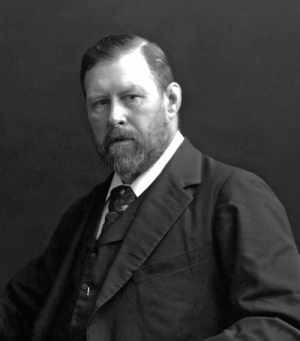
Dracula, the character of Irish-born author Bram Stoker, is the second most-shown character in Western films (the first being Sherlock Holmes). His conception comes from an established depiction of vampires as aristocratic predators and continues Carmilla’s trend of the villain being of Eastern European origin. The Count’s character is inspired by Vlad Tepes (or Vlad Dracula), a Romanian national hero who fought against Sultan Mehmed II and the Ottoman Empire (including his brother Radu, who became Mehmed’s voivode, or war commander) and impaled his victims. Whether Dracula is meant to actually be an immortal Vlad the Impaler is up for debate.
Dracula rests as a centerpiece of vampire fiction with the Count as an aristocratic being with a sweeping opera cloak, “peculiarly sharp white teeth,” and “extraordinary pallor.” 5
Written as an epistolary novel, Dracula starts when Jonathan Harker, a solicitor’s clerk, goes to Dracula’s castle for a legal real estate transaction. After he suffers a traumatic stay at Dracula’s abode, Jonathan flees and suffers a nervous breakdown.
One of the protagonists, Mina Murray, a schoolmistress who marries Jonathan and is best known for her compassion, wit, and fondness of train schedules. Ultimately, rather than focusing on the eponymous character, the novel has a hefty amount of positive companionship. The protagonists consist of a vampire-fighting group willing to sacrifice their lives for each other.
Richard Matheson’s I Am Legend (1954)
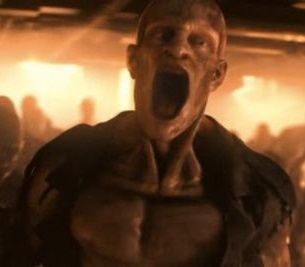
As the recipient of the Horror Writers Association’s Vampire Novel of the Century Award in April 2012 6, Matheson’s novel occupies an acclaimed but odd spot in the vampire genre.
Unlike earlier stories where vampires were typically revenants, Matheson’s vampires are the product of a pandemic similar to the flu or the bubonic plague. Here, vampirism is a disease spread through war and a plentiful mosquito population. The effectiveness of folkloric vampire propellants varies depending on the infected person involved. For example, a cross only affects vampires who were Christian before the plague struck.
Matheson’s novel is more of a science fiction novel than a Gothic tale, but the protagonist, Robert Neville, the only human allegedly unaffected by the sickness, attempts to research and cure the disease.
Indeed, the vampires in I Am Legend bear little resemblance to the literary vampire’s Gothic roots. In fact, Matheson’s work heavily influenced the zombie genre that would form in film. George A. Romero constantly cited I Am Legend as a prominent influence on his cinematic undead 7. Not only that, but Matheson’s novel has influenced apocalyptic and post-apocalyptic fiction as well.
Anne Rice’s Interview with the Vampire (1976)
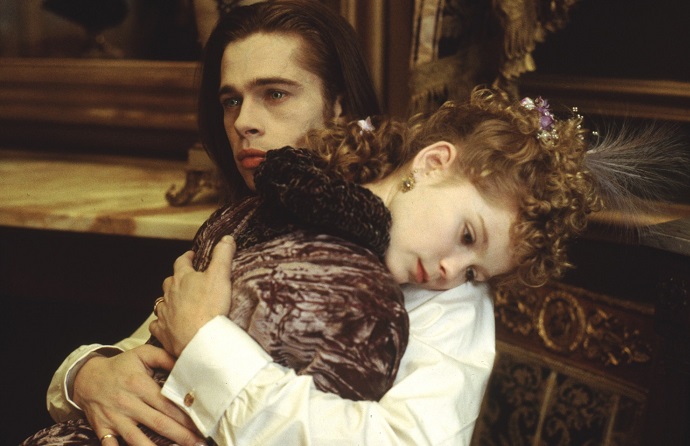
Rice’s novel offers a new gimmick: a vampire protagonist, Louis, narrates his own story of how he grieved the death of his pious brother—an incident that sent him into a spiral of self-blame—and Lestat then turned Louis into a vampire. In earlier fiction, vampires embody the roles of antagonists, creatures to be defeated, but Interview with the Vampire situates the titular vampire as the main character.
In this way, Louis’ viewpoint is unique as he tells his story to a reporter and allows an unheard perspective to be exposed. The vampire is no longer the monstrous entity meant to be defeated by mortal protagonists. There is no longer a clear divide between human heroes versus vampiric villains. (Granted, the vampires in this novel are still murderers.)
Interestingly enough, Rice’s vampires, while sexualized, typically do not engage in sex. Still, Louis experiences homoerotic chemistry when interacting with Lestat and Armand. The novel also engages the topic of vampires never aging and not changing in appearance with Claudia, a six-year-old Louis turns who grows more jaded and knowledgeable, but her appearance never matures, which causes her a significant amount of anguish.
Interview with the Vampire initiates the pattern of primary vampire characters transitioning from antagonists to objects of affection. Because of its place as the “transitional novel” for vampire fiction, it opens the gateway for “ethical vampirism” or the “vegetarian vampires” found in fiction such as The Vampire Diaries and Twilight. Also, it is worth noting that this entry is the first work composed by a female author. Beyond this novel, the crafting of vampire stories contains a significant influence from women.
L.J. Smith’s The Vampire Diaries (1991)
Smith’s Young Adult series further cemented vampires as love interests. Though the TV adaptation was accused of stealing from Twilight, it is worth nothing that Smith’s novel predates Twilight by fourteen years. (However, a Young Adult romance between a male vampire and (initially) human female with a largely female audience getting an adaptation at the peak of Twilight‘s popularity is likely not a coincidence.)
Including The Vampire Diaries, many of the Young Adult series still contain vampiric antagonists and vampires such as Damon who are villainous at first but become love interests later.
Charlaine Harris’ Dead until Dark (2001)
Harris’ novels in the “The Southern Vampire Mysteries” series continue the trend of vampires as love interests. The main character is Sookie Stackhouse, a young waitress who can read human minds. A notable facet of Harris’ books is the role of vampires as a marginalized group. She inverts the power dynamic between vampires and humans on a social level. This book and the series it belongs to ultimately inspired the HBO TV series True Blood.
John Ajvide Lindqvist’s Let the Right One In (2004)
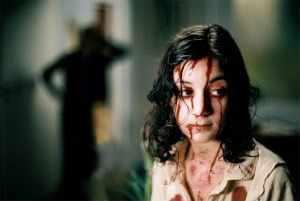
A bit different from its early 21st century companions, Let the Right One In is a Swedish horror story and a pre-adolescent love story. The title derives itself from the Morrissey song “Let the Right One Slip In,” as well as the belief that vampires can only enter a dwelling if a resident invites them inside.
The story occurs in a snowy, isolated setting, which creates an eerie atmosphere. The protagonist is Oskar, a twelve-year-old boy who lives with his divorced mother and experiences relentless bullying, which propels him into serial killer fantasies. He meets Eli, someone he takes for a young woman, though they vehemently deny being a girl. They strike up an odd friendship while a series of deaths occur where the victims are drained of blood.
The influence of vampire folklore pervades the novel, such as the vampires being unable to enter a residence without an invitation. However, opposed to sadism, the story emphasizes the need for blood to survive. As the primary vampire character, Eli does not enjoy killing, but it is a part of survival. Vampires thrive off blood, and if Eli doesn’t fully drain a victim, they turn into vampires as well.
On another macabre note, Eli possesses the assistance of Hakan, a pedophile who admires Eli because they can never age. It is also revealed that, centuries ago, Eli was a male child castrated by a nobleman in a dark ritual, and therefore the novel contains both queerness and the question of gender identity.
Stephenie Meyer’s Twilight (2005)
On her website, Meyer speaks about how she normally wrote very little before she wrote Twilight because of real life obligations. She then states:
I woke up (on that June 2nd) from a very vivid dream. In my dream, two people were having an intense conversation in a meadow in the woods. One of these people was just your average girl. The other person was fantastically beautiful, sparkly, and a vampire. They were discussing the difficulties inherent in the facts that A) they were falling in love with each other while B) the vampire was particularly attracted to the scent of her blood, and was having a difficult time restraining himself from killing her immediately. 8
Thus, a phenomenon formed.
Twilight entails a romance between Bella Swan, an adolescent young women who moves from Arizona to Forks, Washington and encounters Edward Cullen, a vampire she falls in love with. The entire series deals with the conflicts they endure before and after the consummation of their love, such as Bella’s desire to be turned into a vampire as well, as well as facing the Volturi, a coven of red-eyed vampires who enforce laws on the vampire world.
The supporting characters consist of Jacob Black, a werewolf with romantic feelings for Bella, and Edward’s foster family (the “Olympic coven”), including Dr. Carlisle Cullen, Esme Cullen, and some foster siblings.
To reinforce the place of vampires of romantic interests, Meyer stated one of her major influences was Shakespeare’s Romeo and Juliet. Barring the unfortunate circumstances of Romeo and Juliet’s fates, this establishes love as the focal point of Meyer’s intended themes. Interestingly enough, her influences also include Jane Austen, Charlotte Bronte, and other Shakespearean plays. Austen and Bronte are intriguing because they go back to the Gothic influence on the vampire myth.
And indeed, Meyer’s vampires sparkle in the sunlight, and therefore do their best to avoid it because they risk exposure if they begin glittering in a crowd.
Twilight stands as a past cultural phenomenon, not just for the intended audience of adolescent girls, but crossing the generational boundaries to women beyond that age group, such as the girls’ mothers and aunts.
Richelle Mead’s Vampire Academy (2007)
Vampire Academy is the first novel in a seven-book romance-adventure series dealing with a vampire society with its own government. The mythology revolves around vampire folklore’s heavy Slavic roots and features two vampire types: the Strigoi (bad) and Moroi (not as bad). There are also dhampirs, half-human, half-vampire individuals.
The Moroi vampires are concealed from most of the human population with the assistance of humans known as the Alchemists. The Moroi also possess their own government. There also exists a class of humans who allow vampires to feed on them, and the feeding takes those bitten into a pleasure-induced state
Rose Hathaway, a proactive, strong-headed, biracial female protagonist who is a dhampir training to protect Lissa, an upper class vampire noble and Rose’s best friend.
Guillermo del Toro and Chuck Hogan’s The Strain (2009)
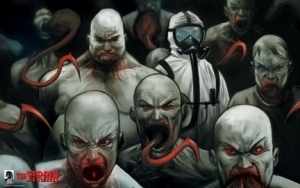
Similar to Matheson’s I Am Legend, The Strain, a 2009 horror novel, revolves around a vampire virus that starts infesting New York. The vampires lose humanity the longer they live.
The characters fighting against the vampires consist of Abraham Setrakian—a Holocaust survivor and history professor—and Dr. Ephraim Goodweather, a man who works at one of the Centers for Disease Control and Prevention and wants to save his wife and son.
Where is the line drawn between “old” and “new”?
Vampires largely found a place in 19th century Gothic literature. Gothic horror existed as the original “shock genre” with erotic subtext, supernatural villains, and a haunted nostalgia for medievalism.
Anne Rice’s Interview with the Vampire acts as the transitional novel, the hybrid of old and new vampire fiction motifs. With a vampire as the subject rather than the antagonistic object, her fiction sets up the basis for vampires as sympathetic. It stands unique as a novel where the vampire is the tragic narrator, and though there is some romanticization, the vampires are still largely murderous; as well as that, Interview with the Vampire starts the shift between vampires as an antagonistic force to vampires as potential love interests.
Alongside that, certain themes and subjects likely considered taboo prior to the late 20th century were better accepted. For example, erotic subtext became erotica. Though authors in periods such of the Victorian era did publish erotica, the literature produced was unlikely to gain the popularity of works produced by authors like Sherrilyn Kenyon and L.K. Hamilton, and it was unlikely, in a time when one could be jailed for suspected sodomy based on homoerotic male-on-male literature, authors could be so open about writing and publishing sexually explicit works without fear of lawful consequences.
When comparing old and new vampire literature, it is important to not that the themes do not intend to frame whether either old or new vampires are “better,” but to see how the recurring issues change over time—or don’t.
Target Audience
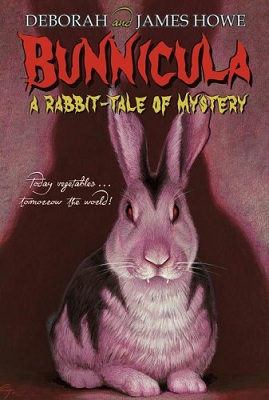
The target audience for vampire novels is perhaps where the shift from “old” vampires to “new” vampires occurred.
Old
Older works about vampires often contain adult themes such as eroticism and murder. They are often gruesome, gory, and sensual—blood and thunder literature. 9
New
Current popular vampire fiction is often penned by female authors for a (typically) younger female audience. Even so, the erotic nature of the vampire becomes more apparent in works such as Laurell K. Hamilton’s “Anita Blake” series and Sherrilyn Kenyon’s expansive “Dark Hunter” series. For even younger audiences, there are some of the Goosebumps tales, some of the tales in Scary Stories to Tell in the Dark (“The Window”), and the adventures of Bunnicula, a bunny who drinks the “blood” from vegetables.
Gender
Old
Barring Carmilla, with its female protagonist and female antagonist, the 19th century works about vampires often had male vampires as the antagonists and women as the victims. Despite that, unlike his predecessors, Dracula is not a solitary vampire; he has brides who accost Jonathan Harker and obey his orders. Stoker’s Dracula features Mina as a proactive character who is pivotal in defeating Dracula, as well as a positive female relationship between Mina and her childhood friend Lucy.
New
A good deal of contemporary vampire stories have female protagonists. Vampire Academy has a forthright protagonist with a strong friendship with another female character. Twilight has the question of Bella’s agency. Many vampire novels portray the common romantic pairing of human cis women and vampire cis men.
However, Let the Right One In contains the queering of the gender lines and sexual identity. The vampire Eli is read, much to their chagrin, as female by Oskar and the text refers to Eli by female pronouns or more ambiguous terms depending on the translation. Because Oskar views Eli as a girl, the readers codes them as such for a heavy portion of the novel. Eli rebukes being referred to as a girl.
Then, it is revealed that, as a mortal, Eli was part of a sadistic 1700s lord’s nonconsensual ritual that involved their castration and change into a vampire—one of the few of their kind. The gender identity ambiguity not only blurs a stark male/female binary, but it makes Eli’s relationship with Oskar queer.
Because of the prevalence of male vampire-female human relationships in romantic vampire fiction, the power disparity between the supernatural male love interest and the female character can be a point of contention, despite the large female readership.
Sexuality and the Body
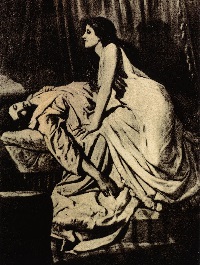
Old
With events such as a wife finding herself dead on wedding night, the relationship between sex and death in vampire fiction is close. Death acts as consummation. There is an innate physicality of feeding, which can lead to death, bodily transformation, new senses, and increased bloodlust. In stories such as Vampire Academy, feeding causes the one being fed upon extreme elation. According to the Oxford English Dictionary, to “die” in Early Modern English meant to climax; no wonder another name for an orgasm is the little death.
Carmilla comes to Laura in sleep, invades her consciousness while she dreams and becomes vulnerable; night creature, like incubi and succubi, attacking and feeding on their victims at night, sometimes when they are asleep. Dracula’s abuse and manipulation also give way to physical attacks that can be construed as metaphorical sexual assaults. He and his brides torment Jonathan Harker, Lucy Westenra, and Mina Harker.
The vampire could be a figure of released repression in a time where homosexuality was enough to have a man serve a prison sentence and endure societal ostracization (just ask Oscar Wilde) and transgressing against Victorian society’s rigid (though potentially not as rigid as it’s stereotyped) sexual mores could prove daunting. Even so, there are negative implications to stating that Dracula’s allegorical rapes “liberate” his victims. Rather, characters like Mina, Jonathan, and Lucy prove dynamic and transgressive by themselves in a narrative where a vampire is the primary antagonist.
The penetration of the teeth and the stake may be construed as allegorical with the phallic imagery involved, a substitution for sexual intercourse when it could typically not be made explicit. However, in Stoker’s Dracula, the metaphor of blood drinking=sexual intercourse likely cannot extend to all circumstances, such as the vampire bats biting Quincey Morris’ horse, Dracula’s brides feeding on babies, and Lucy feeding on children.
Concerning the body, vampires also have a place in the topic of disability, especially considering that “imperfect” babies were considered more prone to becoming vampires after death.
New
As mentioned before, L.K. Hamilton’s “Anita Blake” series contains vampires (and other supernatural entities) as erotic companions, as does Sherrilyn Kenyon’s “Dark Hunter” series.
Interview with the Vampire contains heavy eroticism with Louis’ relationships with Lestat and Armand. Louis and Lestat even raise a surrogate daughter together. The vampires’ beauty remains emphasized, good or evil, thus subverting beauty=good.
Let the Right One In contains castration, sexual violence, and pedophilia, making the sexual content especially grim and emphasizing the chaste nature of Eli and Oskar’s relationship. Their relationship transcends physicality and primarily deals with the intense emotional bond of two lonely outcasts.
Young Adult novels tend to display consensual, heterosexual sex acts as graphic as allowed by intended audience constraints. In Twilight, Bella’s desire for vampirism parallels the promise of her relationship’s sexual consummation with the wait acting as foreplay. While abstaining from sex, Bella repeatedly insists that Edward turn her into a vampire, while Edward resists. Eventually, Bella receives her wish in the fourth installment, as well as bruise-inducing, pillow-ripping wedding consummation.
Disease
Old
In I Am Legend, vampirism treated as a virus rather than a supernatural, mystical issue. In Dracula, the process of vampirism weakens the victim like an ailment, making them (Lucy and Mina) anemic.
New
Because of the transmission of fluids and blood-drinking, vampirism tends to coincide, typically on an allegorical level, with AIDS. The “Southern Vampires Mysteries” ever-so-subtly has a transmitted, vampire-affecting disease called Sino-Aids. In The Strain, the vampire plague comes by crossing the sea like Dracula on the boat.
The spread of vampirism as a disease acts on humans’ fear of losing bodily autonomy through biological causes. The bubonic plague killed roughly fifty million people worldwide, and AIDS, which is transmitted through bodily fluids such as blood and semen, has devastated several communities across the world. The fear of epidemics sometimes treads alongside sexuality. In Raymond McNally’s In Search of Dracula: The History of Dracula and Vampires 10, the author states,
“The AIDS epidemic is also alluded to in both [of] Coppola’s movies, with shots of blood under the microscope, and in Rice’s most recent novel, in which the vampire Lestat puts on a condom when he engages in genital sex. The ultimate fascination is with the erotic reality of blood disease and death. Many people may be ambivalent in the face of death, but all fear loss of blood and infections such as AIDS. Just as in Nosferatu Murnau presented a powerful parallel between the prolonged effects of vampire attacks and AIDS. The element of danger, mystery, and even death associated with sex is thus recreated and preserved in an intelligible contemporary context” (180).
Abuse
Old
Older vampire works contain multiple instances of vampire-on-human stalking and assault. Dracula assumes an inviting, charismatic presence to make Jonathan comfortable before he and his brides perform predatory behavior and intimate violence. Carmilla assumes the same facade when targeting Laura.
New
Concerning newer works, in Samantha Amber Oakley’s scholarly thesis “‘I Could Kill You Quite Easily, Bella, Simply by Accident’: Violence and Romance in Stephenie Meyer’s Twilight Saga” 11, Oakley asserts that Twilight “exemplifies rape culture, promotes heteronormative ideologies, and glorifies traditional gender roles” (2).
Ultimately, the uneven power dynamic between mortals and vampires creates unhealthy relationships. In terms of heterosexual romance, the “Twilight” series also deals with Bella’s relationship with Jacob, a werewolf who participates in the saga’s love triangle until he “imprints” on Bella’s newborn daughter Renesmee—making Renesmee and Jacob bound for life (though not necessarily in a romantic sense).
According to Oakley, Edward and Jacob’s fighting over Bella, as well as her indecision, is less about Bella’s choice in the matter of her romantic life, but “rather it is about who gets rights over her sexuality and reproductive power” (16). She speaks about “vampirism’s function in literature as metaphor for social taboos, patriarchal fears, and sexual violence,” as well as how vampire literature “has changed to reflect Western culture’s shifting morals, fears, and concepts of sexuality” (19).
Privilege, Classism, and Economic Dominance
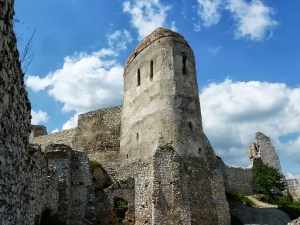
Old
Elitism and exploiting wealth often come with the vampire’s status. Like Elizabeth Bathory initially murdered peasant women, Carmilla feeds on peasant women. When Laura expresses pity for one of Carmilla’s victims, Carmilla states that she does not “trouble her head about peasants” 12 Aristocratic vampires wield their elite statuses and societal privilege to stall justice and engage in rampant libertinism—excessive sadism for pleasure. This stems from power dynamics between the empowered, rich vampire and their normally not-as-well-off victims.
New
Vampire Academy deals with very stark classes within vampire/dhampir society with clear power imbalances between the Moroi elite, the dhampirs who tend to act as guardians or have an extremely hard life, and the human feeders.
In Twilight, Edward has attended Ivy League universities and the Cullens are wealthy. Though the vampires are not all malevolent and violent against mortals, they still possess an elite status and maintain a status quo assisted by their immortality. In The Modern Vampire and Human Identity, Deborah Mutch writes,
As well as class associations, there is a racial dimension to the vampire’s privilege emerging as it does from their ontological superiority to humans through their ability to read minds, manipulate emotions, glamour humans, as well as heightened strength, speed, physical endurance and senses. Moreover, the White privilege vampires enjoy is accrued through means largely associated with White operations of power. As a result of their longevity, vampires manage to maintain and build upon their original family capital, inherited wealth and status being a significant preserve of the White upper class (104) 13.
Furthermore, Mutch goes on to give examples of how Bill from Charlaine Harris’ novels benefits from the exploitation of enslaved people on Southern plantations. Even as the humanized love interests, vampires exude societal privilege.
Race, Xenophobia, and the Other
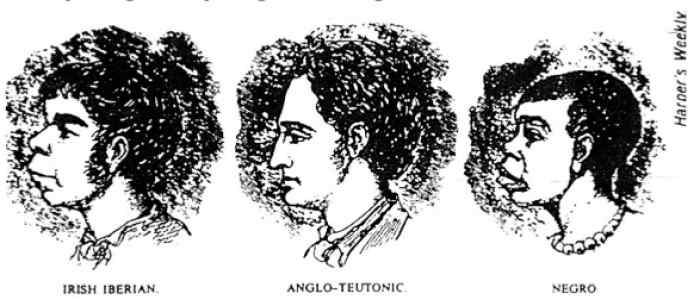
Old
Many of the older, cruel literary vampires have an Eastern European origin. Dracula’s physical features are heavily emphasized to depict him as a degenerate, someone more animalistic and without restraint. The vampires often reside in isolated estates, away from the general populace.
In Western Europe, there was a heavy xenophobia toward Eastern Europeans. Pseudo-scientific racism dealt with studies such as phrenology, the study of cranium size, and physiognomy, the study of facial features to “explain” the inferiority of non-white races and white people thought of as “less than white,” such as the Irish or Eastern Europeans. Dracula also contains the problematic treatment of the Romani as the vampire antagonist’s expendable henchmen.
In I Am Legend, Robert Neville is the sole plague survivor attempting to conquer overwhelming odds—one against many.
New
In “The Southern Vampire Mysteries,” the vampires, despite their physical prowess over humans, are depicted as second-class after they “come out of the coffin.”
Twilight has garnered criticism for the misrepresentation of the Quileute, Jacob Black’s tribe of werewolves, which entails issues of race and class.
The characters also tend to represent ostracized sexual and gender identities, such as Carmilla and Let the Right One In’s Eli. Similar to Frankenstein’s monster, the vampiric metaphor can apply to one without firm connections with humanity or deal with dehumanization made literal. This is augmented by vampirism often being made a necessary dark secret.
Junot Diaz on the plight of being an author and reader of color:
“You know how vampires have no reflections in the mirror?” the Pulitzer Prize-winning author asked. “If you want to make a human being a monster, deny them, at the cultural level, any reflection of themselves.
“And growing up, I felt like a monster in some ways. I didn’t see myself reflected at all. I was like, ‘Yo, is something wrong with me?’ That the whole society seems to think that people like me don’t exist? And part of what inspired me was this deep desire, that before I died, I would make a couple of mirrors. That I would make some mirrors, so that kids like me might see themselves reflected back and might not feel so monstrous for it.” 14
Bella considers herself an outsider, marks herself with the flaw of clumsiness. Ironically, the attributes meant to make her unique render her as a protagonist many readers saw themselves in, thus negating and highlighting the paradoxical rarity of a “normal girl.”
In Let the Right One In, Oskar, bullied relentlessly and suffering from incontinence to the point that homicidal ideation becomes a coping mechanism, finds a protector in Eli, who encourages him to fight and saves him by intervening in life-threatening situations. His loneliness—and Eli’s as well—is alleviated by the novel’s end.
Religion
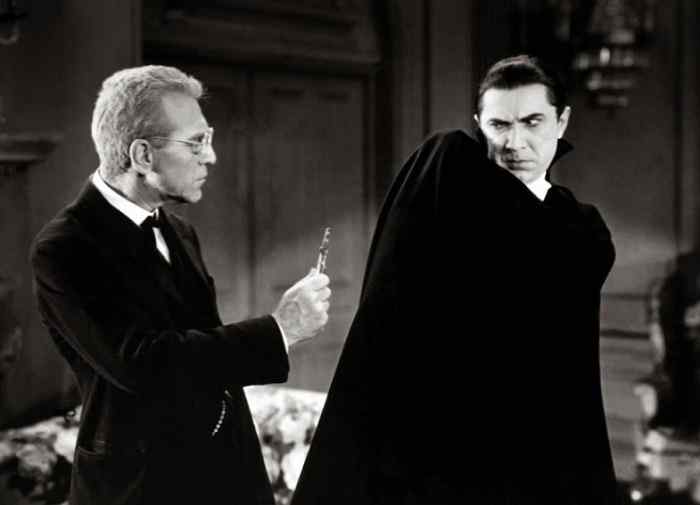
Vampire lore possesses both Abrahamic and pagan influences. It is worth noting that, in real life, vampirism is itself a religion in the real world, i.e. Temple of the Vampire. In Anglo-Saxon times, in a period rife with bleakness and bloodiness, community and religion proved to be prevailing ways to find hope while reminiscing in harsh climes. Exile was worse than death. In folklore, the vampire is typically not only isolated, a lone predator, but is also averse to religious symbols such as the cross.
Old
In Dracula, there is mention of the protagonists being Anglican when Mina and Jonathan marry in a Catholic church while Jonathan is recovering from his torment at Dracula’s estate. Later in the novel, a communion wafer burns Mina’s forehead after Dracula assaults her.
The victims of the vampire virus in I Am Legend—Christian vampires react when faced with a cross, but vampires of other beliefs do not have significant reactions.
New
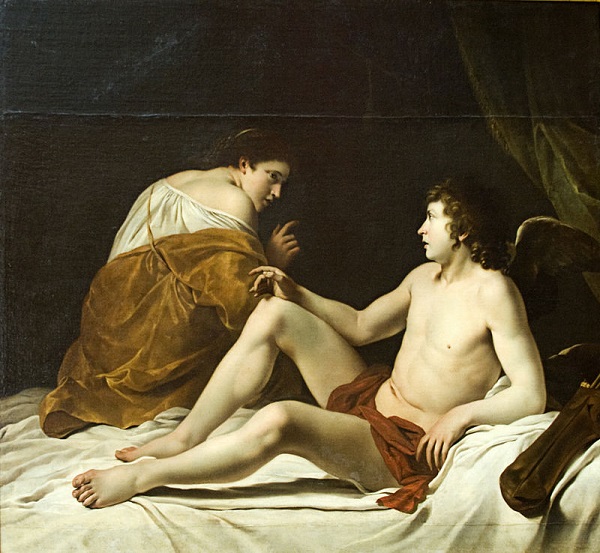
Newer novels seem to intermingle vampires with divinity, emphasizing their more-than-human status.
In Anne Rice’s “Vampire Chronicles,” she establishes that the vampires’ genealogy stems from Isis and Osiris.
In Let the Right One In, the word “Eli” means “God,” which is directly pointed out by a police officer investigating the town’s mysterious murders. Essentially, Eli acts as Oskar’s immortal savior.
Twilight deals with Meyer’s Mormon faith, even from the first cover, which alludes to the Temptation of Adam and Eve. As such, both Edward and Bella face temptation because of her desire for him and his acknowledgment that her blood smells enticing. However, an aspect that occurs prominently in the narrative is the belief that LDS followers can ascend into godhood.
From The Encyclopedia of Mormonism:
The Church of Jesus Christ of Latter-day Saints teaches that all resurrected and perfected mortals become gods (cf. Gen. 3:22; Matt. 5:48). They will dwell again with God the Father, and live and act like him in endless worlds of happiness, power, love, glory, and knowledge; above all, they will have the power of procreating endless lives. Latter-day Saints believe that Jesus Christ attained godhood (see Christology) and that he marked the path and led the way for others likewise to become exalted divine beings by following him (cf. John 14:3).
Finding godhood post-death connects to Bella’s yearning more than anything to reach her ultimate perfection by becoming a vampire, a creature with fantastic power and beauty. It makes sense that she compares Edward to Adonis, the Greek god of beauty.
Not only that, but Bella’s story of transcending her mortality has other deep mythical roots. In Greek mythology, Ariadne, a princess, assists Theseus, a demigod she loves, in slaying the Minotaur and escaping a labyrinth. When they leave together, he thanks Ariadne by abandoning her on the shore of Naxos. Despite that, Dionysus, god of fertility, wine, and the theatre, finds her, falls in love with her, and she becomes a goddess when they marry. Similarly, Psyche, a mortal princess renowned for her beauty, undergoes several of Aphrodite’s trials to eventually become Eros’ immortal bride. Psyche and Eros went on to have a child called Hedone, who represents the union of sexuality and the soul (hedonism).
Both the stories of Ariadne and Psyche entail mortal women facing challenges and achieving godhood after finding the love of a god, and this encapsulates Bella’s romance with Edward, whose beauty and strength are elevated and constantly idealized. “Apotheosis” is the zenith of something, and this is ultimately what Bella seeks: the zenith of herself, from humanity to divinity.
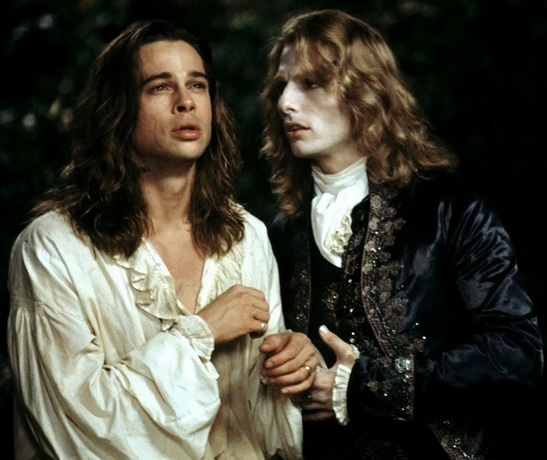
Why do the above themes matter? They matter because they display why the vampire myth has longevity. Issues such as death, a reprieve from death, and societal injustice are both ubiquitous and have no expiration date. This is even if, like the vampire, they transform and take on different attributes over time.
The future of vampire literature remains unclear, especially given that it has currently been exhausted. The popularity of paranormal Young Adult lit without anything genre-breaking has both waned and given way to dystopian fiction because of the success of Suzanne Collins’ The Hunger Games. Traditional or re-imagined, the beating heart of the genre rests on the many prevailing themes present in vampire-inclusive fiction. Vampires ultimately stand as villains, allies, lovers, and persistent metaphors. For now, one can only infer when vampires will rise again in literature and what social problems their creators will dissect.
Works Cited
- “vampire, n.” OED Online. Oxford University Press, December 2015. Web. 9 December 2015. ↩
- Luckhurst, Roger. “From Dracula to The Strain: Where Do Vampires Come From?” BBC. BBC, n.d. Web. 10 Dec. 2015. ↩
- Jøn, A. “From Nosteratu to Von Carstein: Shifts in the Portrayal of Vampires.” ResearchGate. N.p., n.d. Web. 03 Apr. 2016. ↩
- Gibson, Matthew. “JANE CRANSTOUN, COUNTESS PURGSTALL: A POSSIBLE INSPIRATION FOR LE FANU’S “CARMILLA”.” University of Central Lancashire, n.d. Web. 15 Dec. 2015. ↩
- Stoker, Bram. “Dracula: Chapter 2.” Carnegie Mellon School of Computer Science. Carnegie Mellon School of Computer Science, n.d. Web. 24 Dec. 2015. ↩
- “2011 Bram Stoker Award™ Winners and Vampire Novel of the Century Award Winner.” Horror Writers Association Blog. WordPress, 1 Mar. 2012. Web. 11 Dec. 2015. ↩
- Paffenroth, Kim. Gospel of the Living Dead: George Romero’s Visions of Hell on Earth. Waco, TX: Baylor UP, 2006. Print. ↩
- Meyer, Stephenie. “Twilight: The Story Behind Twilight.” Stephenie Meyer. N.p., n.d. Web. 15 Dec. 2015. ↩
- Chesterton, GK. “A Defence of Penny Dreadfuls.” De Montfort University, n.d. Web. 29 Mar. 2016. ↩
- McNally, Raymond T., and Radu Florescu. In Search of Dracula: The History of Dracula and Vampires. Boston: Houghton Mifflin, 1994. Print. ↩
- Oakley, Samantha Amber, “‘I Could Kill You Quite Easily, Bella, Simply by Accident’: Violence and Romance in Stephenie Meyer’s Twilight Saga” (2012). Theses, Dissertations, and Other Capstone Projects. Paper 126. ↩
- Le Fanu, Sheridan. “CARMILLA.” Sff.net. N.p., n.d. Web. 10 Dec. 2015. ↩
- Mutch, Deborah. The Modern Vampire and Human Identity. Houndmills, Basingstoke: Palgrave Macmillan, 2013. Print. ↩
- Stetler, Carrie. “Junot Diaz: Man in the Mirror.” NJ.com. New Jersey On-Line LLC, 26 Oct. 2009. Web. 21 Dec. 2015. ↩
What do you think? Leave a comment.











A fantastic article!!! Amazing work Emily. You have truly outdone yourself.
Thanks! It took me a long time to complete this one, and I’m elated to have it out. 🙂
I’ve just finished reading Bram Stoker’s Dracula and was amazed at how well it stands up as a chilling, suspenseful book given everything that’s been written since.
I’d love to see an accurate, authentic movie remake now. With well orchestrated (but not over-done) effects and someone like David Lynch in charge, it could be fantastically evil.
Dracula definitely stands the test of time. When I read it, I was amazed by how engaged I was. I actually sought to do a retelling, which may happen one day. I agree that I would love an adaptation that’s faithful to the novel. Admittedly, I haven’t really enjoyed most adaptations, unless Hellsing counts? I’m not a fan of the recent trend to make Dracula and Mina romantically connected, as well as the frequent Jonathan vilification. I mean, Dracula DID abuse Jonathan and Lucy, two people Mina loves.
I love vampires in film and books but they have been overdone waaaaay too much over the past few years. It’s time for them to take a break before they become too much of a pain in the neck (sorry, I couldn’t resist). We need something NEW!
Agreed, and I’m glad I wasn’t the only one holding back vampire puns! I love vampires, but there’s a need for some…fresh blood. But in all seriousness, it’s maybe best if the vampire genre takes a rest for a few years before a resurrection. I do believe the genre will return with new material, but it’s like zombies and dystopias now–so saturated that current audiences are tired.
Top of my list is George R. R. Martin’s Fevre Dream. Southern steamboat gothic, and a truly excellent book.
And, of course, floating somewhere between the vampire and zombie genres, there’s Richard Matheson’s I am Legend.
Wow, as a huge ASOIAF fan, I’ll have to check Fevre Dream out! Southern Gothic? Steampunkish elements? Sign me up!
Great post. To vampire lovers, I recommend J. Hazzard’s Blood Leverage. It was written by an adult for adults, and takes place after the world’s already been taken over by vampires. Imagine what everything would be like if the Authority from TrueBlood took over the world and the only remaining humans lived in harvest reservations, and you’ve got a good idea of it. Post-apocalyptic/dystopian. Sort of like I Am Legend except all the vampires are well-spoken and dress formally and they’re in charge of the government.
Thanks for the recommendation! That sounds like a plot I’ve considered writing, and one I’ve wanted see–the vampires essentially taking over the government with the remaining humans having to donate to blood banks. It actually makes more sense to me that vampires, with their powers, would be the ones with societal privilege.
I must say vampires have always been interesting to me, however there isn’t enough knowledge about them “if” they do exist.
Thanks for commenting! It’s very interesting seeing how different cultures interpret vampire encounters, or the fear of vampires/revenants coming back from the grave due to something that marks them as different and allegedly supernatural.
Some research I’ve done mostly explains the creation of them based on things the body does after death. People just preferred to make mythical stories instead of investigate back then and made vampires to be a real thing.
Scientifically speaking, that doesn’t deny their chance of existence. But it seems mostly implausible under current known evidence. One can always hope
i like almost all vampire-related books, whether the vampires are scary and predatory or are more human and have relationships. my favorite of all is the original Dracula story by Bram Stoker.
Agreed, I like a mix, and Dracula is excellent! Let the Right One In is likely my favorite book of all time.
I like when vampire novels have subtextual commentary on Victorian society.
I have a soft spot for the Victorian Era and Gothic literature, so I see what you mean. 🙂
I like Anne Rice’s Vampires the best – complex and sexy and a bit emo, but still scary killers. And I loved their origin story.
I can see why. I definitely like Anne Rice’s very vivid Gothic prose!
The title alone got me thinking about how vampires haven’t really been changed a whole lot over the years.
Still pale skin and aren’t allowed in the sun otherwise they’ll get stung (other than twilight)
It would be nice for a bit of a change, but not too drastic.
Thanks for the comment! I definitely wanted to touch on how the same themes are touched upon throughout the genre. Yeah, literary vampires are predominantly white. It’s a shame there’s not more diversity.
The “getting hurt by the sun” aspect of vampires wasn’t that prominent until the film Nosferatu. Dracula could be weakened by sunlight, but he could manage, and then there are vampires like Rice’s who turn to ash. Then, many vampires go back to a) walking in sun with little penalty (though the sparkling in a way exposes vampires as not human) or b) weak to the sun, but using spells or enchanted objects can circumvent that.
I’ll be interested to see what future authors do with vampires!
I don’t mind vampires being nice to look at if they’re also capable of murdering you and not really giving a shit. The vampires in True Blood are sufficiently violent and amoral, but unfortunately people often associate the series with Twilight because it’s become popular at the same sort of time. The two couldn’t really be much further apart.
I suppose it would be nice to get back to really traditional vampires.
While I’m not necessarily opposed to “nicer” vampires, I do have a soft spot for vampires who relish their immortality with some debauchery thrown in. I always did like Lestat in Interview with the Vampire.
Thanks for the comment!
Cassidy from the ‘Preacher’ comics is great. We need more Irish vampires.
That sounds interesting! While I don’t have Irish vampires in my own works, I do have one incredibly Catholic one, haha.
The big problem is that vampires are way over exposed right now
Agreed. As much as I love vampires, I think they need to rest in their coffins for a decade or so before audiences will be receptive to them again.
i like vampire fiction like bram stoker & anne rice those books
renewed my inturst in reading books for entertainmet
Thanks for the comment. I agree, I really enjoyed Stoker and Rice’s takes on vampirism.
I have this article in my bookmarks now.
Thank you! It’s appreciated!
I am writing a book and I honestly believe that the vampire needs a new approach in the literacy world seeing that there are so many and in different places, a new character of vampire will be great for this book.
Best of luck with your book! I’m curious about new avenues to exploring vampires in fiction. One of my projects is “technically” a vampire book, but see, the immortal character is never seen drinking blood and scoffs at the label because “I’m Catholic, vampirism is against my religion because that’s a pagan superstition!” So it’s more ambiguous.
May I recommend Joe Hills’ horror short story collection 20th Century Ghosts, in which resides a lovely little piece called Abraham’s Boys – this is a fresh and original take on those crazy souls that have dedicated their lives to fighting Vampires, and the terrible strains it puts on one’s family as they take refuge from the precieved threat of retribution from the Undead.
Joe is also Steven King’s son, in case you didn’t already know.
Thanks for the recommendation! I actually read 20th Century Ghosts last year, and the short story you mentioned is one of my favorites in that collection, that and the one about a boy and his balloon person best friend. Joe Hill is an amazing horror writer–I enjoyed both his short stories and Horns.
I love vampire literature but I think the way to make them scary is to make them repulsive again. The Count Dracula described in Stoker’s novel is pretty repulsive. So was max Shrek in Nosferatu. And then along came Bela Lugosi in evening dress and the vampire as the pale slick-haired lounge lizard, dangerous but interesting, was born. Where are the charnel-house smelling breath, the anaemic wrinkled hairless skin (think naked mole rats), the disgusting teeth (again- naked mole rats) or reptilian eyes? No- vampires are basically refrigerated zombies – dead but undecaying flesh. Nothing glamorous about them at all. They are ugly. Ugh!
Thanks for the comment!
Oh yes, you’re right, Dracula is described as very hairy with odd features. (And a mustache!) Part of that has to do with the notion of beauty=good and ugly=evil in 19th century English lit (and lit prior to this era too), which is an idea deconstructed in works such as Wilde’s The Picture of Dorian Gray. Another reason is Stoker’s interest in physiognomy, the thought that facial features indicate a person’s personality, which was also used to promote racism and xenophobia. (In this case, Dracula’s features are coded as heavily Eastern European and also depraved.)
Still, there is definitely something to the “monstrous” vampire and what it can represent!
30 Days of Night (the film and comicbooks) have the scariest vampires I can think of. They’re brutal, hunt in a group, loud (with a terrifying language of their own), they look incredibly scary and there’s not a hint of trying to seduce a virgin in sight.
Stephen King’s Salem’s Lot (the book, not the films) was also very creepy as was the original Nosforateau (one of my favourite films).
In movies – Twilight’s vampires are for young teenage girls who have just discovered sexual attraction; Blade made vampires cool if they’re good, idiots if they’re bad; in True Blood they all should attend a sex addicts intervention once in a while and I Am Legend’s vampires would have been great if they wasn’t so CGI.
It seems vampires just won’t die.
I guess you could say literature has…immortalized them. 🙂
Tanith Lee has written some of my favorite vampire stories. If I had to pick one it would be “Fleur de Feu”.
I like Tanith Lee! I’ll have to check “Fleur de Feu” out.
Wow! This article is simply amazing. It is so informative and entertaining.
I was never really that into Vampires. When it comes to reanimated beings, zombies are more my thing. However, this break down of Vampires in literature was inspiring. It makes me truly appreciate what the Vampire stands for and what it has become. Thank you!
Also, I read Bunnicula for the first time in one of my children’s literature classes, and it was so adorably cute. I could handle a lifetime of animal vampires.
Thank you very much! 🙂 I’m glad you enjoyed the article. And I loved Bunnicula when I was in elementary school!
My elementary school reading consisted of Anne of Green Gables, but I think its just a required reading for Canadians at this point haha.
I recently picked up Dracula on sale at a bookstore, so with this newfound Vampire knowledge, hopefully I’ll be able to appreciate it more.
Haha, nice. My fourth grade class had a shelf where we could pick different books. I made…interesting choices, LOL. I love Dracula–active female character, interesting dynamics, pretty powerful companionships. Also, all the characters are major nerds. It’s basically “How do we try to defeat the monster? SCIENCE AND TRAIN SCHEDULES.” It’s basically the opposite of Frankenstein with the monster/science relation. Hopefully you’ll enjoy it. 🙂
Emily, this is absolutely fabulous! Now I have a point of reference when in need of any Vampire history, one never knows when this will be required 🙂
Thank you! I’m glad to be of service. ^_^
One of the most comprehensive guides to the vampire novel out there – this must have taken you a long time to put together! Great work.
Thank you very much! I’ve been working on this one since December 2015, and it’s definitely my longest and most detailed piece. 🙂
Vampires have been killed by the teen market. Give me some zombies any day of the week, preferably The Walking Dead kind.
I do think, despite the versatility of vampires, the overabundance of vampire-centric stories put a (temporary) stake in that genre. Readers and viewers became tired. I think zombies have worn some people out too, but there’s still room for enjoyment and innovation. 🙂 Maybe after a breather, vampires can rise again.
I think the best vampire piece I know is Angela Carter’s short story The Lady from the House of Love (from The Bloody Chamber).
Angela Carter is always fun in her dark and gruesome way! (Speaking as a fan of the dark and gruesome.)
vampires for me will always be The Count from Sesame Street…
on second thoughts probably more The Lost Boys..
I love The Lost Boys! And the Count, of course. 🙂
Let the Right One In is STUPENDOUS. That book is like 500 pages long, but I carted it around in my backpack full of other giant books (I was a lit major) of my own free will for like 6 weeks because I had to be reading it at every spare moment.
Let the Right One In is my favorite book of all time, and as an English major who has trouble finding time for pleasure reading, I think it’s great that LtROI captured your attention that much. It did the same for me when I read it for the first time in high school.
Loved The Historian by Elizabeth Kostova. That’s one of my favorite books.
Oh yes, that was an interesting one!
GRRM wrote a vampire novel, though I haven’t read it yet. Maybe I should read it. He’s my fav author.
As a huge fan of ASOIAF, I’m tempted to check that one out as well. I love GRRM’s style.
There is the good Vampire novel, but having them be complex threats is the way to pull it off. Stephen King did it wonderfully with ‘Salem’s Lot and of course the original force of nature is Dracula but it is hard for me to find solid Vampire fiction. I just want to see someone do it well again before I’m dead.
Salem’s Lot is a great novel, though I read it in middle school so the details are fuzzy. I remember really liking Father Callahan’s character. I am certainly anticipating The Next Great Thing for vampire fiction in the years to come.
You mentioned that ‘older works about vampires often contain adult themes such as eroticism and murder.’ Why do you think a shift in vampire literature has occurred? I complexly agree, yet it seems odd that in a highly sexualised world, romance rather than eroticism seems to have dominated. Do you think it’s because today sex is a social norm, rather than taboo?
Thanks for the comment!
I suppose there’s more than one answer, but I think the reduced focus on erotic and violent appeal alone may have to do with audience. Vampires in the 19th century were often found in penny dreadfuls, lurid, erotic, and violent tales that could be purchased for a penny. Then, vampire literature, even prior to Twilight, became more mainstream with vampires appearing in stories for children (Bunnicula) and teenagers (The Vampire Diaries). Vampires are also not strictly villains and therefore content surrounding them may be lighter.
There’s still violence and eroticism in contemporary vampire literature, but any restraint may be because vampires (and other mythical creatures like werewolves) appear in far more stories that are accessible to multiple age ranges, including middle grade and YA, so a romantic vampire with minimal eroticism is not out of place. Vampires are no longer relegated to cheaply purchased adult fiction meant to shock with lewdness and violence. This is not meant to deride penny dreadfuls, but essentially vampire tales are more ubiquitous and entail different archetypes than the depraved, sadistic, aristocratic vampire who seems overtly sexualized. Essentially, many of these stories are kid-friendly.
And yeah, it could certainly be that sex in many contemporary areas isn’t as taboo and therefore the topic can be broached in multiple genres, not just the 19th century literary equivalent to exploitation films, which have the potential for transgression. We no longer need to rely on vampires and bloodletting as metaphors for sexual deviance or transgression. Vampires now can even represent issues or subjects such as capitalism, like in the film Daybreakers.
Bankers are the new Vampires. They suck ya dry, are known to turn into ravening wolves, hang around in vaults and most of them are counts (the ‘o’ is silent).
Ha! I think you have an interesting metaphor there. There are films like Daybreakers that use vampires as part of a metaphor for economic issues, which could tie into social privilege/economic dominance. Also, on a marginally related note, I just read somewhere that the reason “Earl” was used instead of “Count” in Medieval Britain was because of the pronunciation sounding like a certain tawdry word. Maybe there’s a double entendre at work there a few centuries later–well played, Stoker!
I hate the current rash of ‘vampires as cute teen boys with issues who never grow old and ugly’.
Thanks for the comment! That idealized, permanent beauty is definitely a constant, isn’t it?
I’m far more scared of bedbugs than I am of the current softy vamps.
Thanks for the comment! Funnily enough, bedbugs feed exclusively on blood, and the most common one, the one most likely to be in your sheets, prefers human blood. In a way, compared to some of the contemporary vampires who abstain from drinking human blood, if these vampires existed, you’re would be more likely to be attacked by a bedbug.
*you would more likely be attacked by a bedbug
I like reading each author’s own take on it. I like reading their version of the “rules” for each author does it differently. Some can go out in daylight, some have to be killed by beheading, etc.
I agree! It’s neat to see what rules are used and made important. For example, Let the Right One In deals very heavily with the idea of vampires needing to be invited into a location, and this also carries emotional significance between Oskar and Eli.
Vampirism! Keep it coming!
Thanks! 🙂
Might just add that Zombies are fast becoming the new Vampires in the sense they seem to be in tons of horror/sci-fi works both written and filmed and are in danger of falling into being a parody of themselves (themselves being just a parody of life, if you like) and ultimately ending up not being scary in the slightest and soon enough generating an”enough already” reaction from people like us
Agreed, good point. I have nothing against zombie fiction because there’s some good stuff, but I am a bit fatigued with seeing them everywhere.
‘Blood Sucking Fiends’, by Christopher Moore, heads in the opposite direction, and makes it into comedy. Lots of laughs; the vampire heroine has Irish ancestry, and complains about never being able to eat potatoes again.
I’ve read Christopher Moore before, and I agree, he’s a riot! That sounds hilarious. I also read something a long time ago (not by Moore) about a vampire support group that was funny, but I’ve forgotten the title.
I would like a vampire book where they all turn out to be some human mosquito type deal
Now, THAT is a fascinating image. Imagine the body horror of insectoid vampires.
I’d prefer vampires akin to how they appear in traditional folklore and mythology.
I can see why. I definitely love Carmilla and Dracula. 🙂
I really enjoyed The Night Huntress Series by Jeaniene Frost. The first in the series is Halfway to the Grave. Lots of action, romance and comedy.
Thanks for commenting! I’ll have to check that series out. 🙂
If you like vampire books with a sense of humour, Christopher Moore’s A Love Story books are a lot of fun.
Thanks for the recommendation! Come to think of it, I think I’ve read a vampire book by Moore once, but I’ve read so, so many, haha.
Extremely well written and well-researched article. Offers a very elaborate understanding of the “vampire” as it appears in literature and pop-fiction. I think why writers keep going back to the vampire theme is because a substitue that is good enough or interesting enough is yet to be found.There is so much history related to the vampire that makes it all the more engaging.
Thank you very much! Agreed. Vampires are very accessible because of books and films, and they can be used as allegories for so many societal issues. I can see why many writers are drawn to them (including myself).
Extremely well written and well-researched article. Offers a very elaborate understanding of the “vampire” as it appears in literature and pop-fiction.
Abraham Lincoln: Vampire Hunter. I think it’s very underrated because of the shit movie. It’s very well written and an absolute blast.
Agreed, I enjoyed that one! Definitely don’t judge that book by its movie…
I vary – I enjoy a truly monstrous vamp like in Wellington’s 13 Bullets or Guillermo del Toro’s Strain trilogy, a well-developed romantic vamp like those found in some urban fantasy series, and a creepy more mythological take as well.
Agreed, it depends on a lot. I tend to like “sophisticated” vampires over the more zombie-like ones, but if the material’s good enough, I’m pretty receptive.
The Historian was an awesome read. I would recommend this even to people who say they don’t like vampire books.
I think that novel definitely appeals to anyone who likes books like The Da Vinci Code. 🙂
Wonderful, detailed article! Love it!
Thank you! 🙂
My least favourite trope is where they’re no different than zombies and where they infect each other. I’d like to think when they turn someone else it’s intentional. I also think vampire hunters have been done to death, as have uber-rich teenage vampires who are fifteen and go clubbing like they’re 22.
Agreed. Though the story can be well done, I prefer vampires like Carmilla, Dracula, and Lestat, ones capable of foresight and scheming.
Anne Rice is the only author I’ve actually enjoyed whilst reading about vampires. Interview was just everything I wanted it to be & more.
Although I should add, Let Me In by John Ajvide Lindqvist was undeniably disturbing yet enjoyable at the same time.
Interview with the Vampire really is spectacular. Rice is wonderful at instilling that vivid Gothic atmosphere. And Let Me In/Let the Right One In is my favorite novel of all time. As you said, it goes there in terms of grotesque, uncomfortable elements, but it also has heart to it.
Christopher Golden’s Shadows – not the best written books, but the vampires are human but still scary killers and they get another really great and different origin story.
That sounds interesting! I’ll have to check it out. 🙂
There’s no denying that vampire fiction is among the hottest genres in literature these days.
Yeah! I think many publishers are worn out on it, but I also think vampire lit will rise from the grave one day. 🙂
Love the part about how sex and death are intimately intertwined–reminds me of how Faulkner’s Quentin Compson always associates his sister’s sexuality with death. It seems that sex and death, while both integral parts of the “circle of life,” so to speak, are similar in the way that they both allow us to understand the limitations of our bodies and possibly transcend beyond these limitations and beyond the self.
Thank you, and that’s a great observation! You worded it perfectly. The connection between intimacy and limits/transcendence is a powerful one explored in a great deal of literature, such as Faulkner or even Donne’s spiritual poetry.
I Am Legend it the best vampire book I’ve read. To be honest it might be the only one I’ve read, but I totally recommend it.
That’s great! It’s one of the books I haven’t read, but I plan to one day. 🙂
This is an excellent post, which I’ve only had time to skim read so far.
Thanks! 🙂
WOW! Amazing comparison of the portrayal of vampire through centuries!
Thank you so much! I’m glad you enjoyed it!
I think vampire folklore and literary tradition is fascinating, but I know little about it. This is exactly what I needed. Thank you.
No problem, thanks for reading!
Great article! I admit, I was a little sceptical of your “old vs new” split, but you won me over. It would be interesting to see what other factors influenced the development of vampire stories beyond what you touched on here – for instance, I find it interesting that Dracula is an aristocratic villain from a monarchist author like Stoker. But I thoroughly enjoyed your look at vampire fiction, and am looking forward to your next piece!
Thanks, I appreciate it! 🙂 The original topic was old versus new vampires, but I tried to infuse different themes in there rather than it be a contest. Also, excellent point about Stoker’s views! Vampire fiction has so many different aspects that even with what I wrote, there’s so much more to be explored. One thing I considered was that vampires in film opened up the genre to more commercialization, which led to vampires not just being relegated to serial horror fiction.
One theory you might find interesting comes from Cracked.com. It puts a political spin on vampire as well as zombie fiction (unfortunately just in an American context, but they are mostly American movies):
http://www.cracked.com/article_19402_6-mind-blowing-ways-zombies-vampires-explain-america.html
Wow, thanks for showing me this. That’s actually a pretty intriguing parallel. I know, in a documentary, Romero spoke about ” Dawn of the Dead” being pretty anti-consumerism, and it does make sense that vampires can represent certain fears about less restrictive attitudes toward sex. This is pretty neat because I just realized the “versus” superhero trend this year (BvS and Civil War) is very timely given the side-picking of the 2016 American presidential election.
Gilda, from Gilda Stories (and a few other short stories as well) by Jewelle Gomez are a must read.
Thanks for the recommendation! 🙂
What’s next for the fanged legends? Another reinvention is likely waiting in the wings!
Thanks for commenting! Agreed, I definitely think there’ll be some inventive new look at vampires in the future, though I’m not sure what form it’ll take.
Constantine from Robin McKinley’s “Sunshine”. My all time favorite vampire novel because it’s not traditional, but keeps you on edge all the same.
Sounds interesting! I’ll have to check it out. 🙂
Constantine is my favorite vampire! I love that book!
What a thorough article. Well done! One thing I have always pondered about the vampire theme in literature and its enduring popularity is that it reflects the human fascination with “the Other.” There is something fascinating in the “otherness” of vampires, whether scary or seductive. Another quality of the “Other” is the inability to fit in with “normal” human society. I think that’s why many vampires are depicted at super-human. Even the most seductive of vampires, such as Rice’s Lestat, have this quality of “otherness” about them, and the kind of inherent loneliness that goes along with being “Other.” Add this to the fact that vampires are not only “Other” but are a dangerous Other…this contributes to their perennial allure, for to explore the Other is to explore mystery, and I think all humans are intrigued by, and attracted to, the deep mystery of their own psyches and the psyches of others whom they seek to understand.
Thanks, and excellent way to phrase it! The concept of the Other is definitely present with vampires Many monsters in horror fiction raise interesting parallels with societal fears.
This is a well-researched paper. As one interested in Victorian literature, I was fascinated with how you associated vampires of that era with eroticism, degradation of humans (particularly white men) and class – the wealthy, aristocracy feeding on the life’s blood of the working class. I agree that vampire motifs will always reoccur, perhaps because they are so strongly associated with social, economic and ethical concerns that remain a focus in our own era. Excellent paper – I enjoyed your comprehensive view of vampires then and now.
Thanks! I’m glad you enjoyed this and liked my points about how vampires are connected with recurring social, political, and economic themes.
Love this article! great comparison! vampires are my fave 😀
Thanks!
The evolution of different monsters in fiction is always interesting to observe.
Agreed! It’s fun to see how monsters change with time. 🙂
Ann Rice’s vampires were the most frightening to me. The way she humanized her vampires and gave them feelings and the fact that they could feel regret but still kill made them even more terrifying.
Agreed, I think vampires like the ones in Anne Rice’s series and Let the Right One In strike a great balance between sympathy and danger.
I must say, you have been very detailed in your research. As someone who was terrified of Anne Rice’s “Interview With The Vampire” when I was younger, and someone who effortlessly fell in love with the Twilight Saga, this article was a very interesting read. Write on!
Thanks, I appreciate it! The mythology of Twilight is actually very interesting to me with its own government and covens. I did my best to give the “newer” works as much research and dissection as the older works, and the hour-long video lecture I found and linked was very helpful. 🙂
The Blade comics/films get left out a lot but they definitely provide interesting allegories for class, racism/racial identity and disease.
Thanks for the recommendation! I didn’t look too much into comic books and films because the topic is so vast when just restricting it to what I have, but I 100% agree that the Blade comic books and film are important for the reasons you stated. 🙂 It’s so rare to have characters of color take center stage in the vampire genre.
Incredible incredible article, I’ve been reading and rereading it again and again and I think the content and research that has made its way into it is phenomenal! Many have criticized the popularity the YA series got, but few have stopped to wonder what exactly about Twilight managed to engage with thousands upon thousands of readers worldwide. While I’ve waited to see people discuss its impact and mythical origins in dept for a while now, this article goes beyond that in order to discuss its historical and literary precedents, which is fantastic. What I’m left wondering, then, is what the gradual changes in the theme mean about the changing mass imagination of generations, and where these changes are bound to take us. Are vampires, as well as other traditionally dark characters, going to continue being romanticized and glamorized beyond (or because of) their dark natures (Teen Wolf, Twilight, IZombie etc) or can we expect a rebuttal and a return to the hyper-villainous depictions of these monsters?
Thank you so much! Yeah, YA gets a lot of flack, so I tried to show how and why the vampire craze came about. I too am curious about where vampire lit will go from here and if vampires will be villains, romantic heroes, or something different.
This is a really good and thorough overview of vampirism in literature. I think that given the popularity of the vampire trope lately, these are things that need to be said, and facts that need to be set out. I, too, think the Blade series would be worth considering as well, especially if you ever did a “Part II” or something focusing on vampirism in cinema or television.
Thanks! And yeah, if I ever wrote on vampire TV and cinema, Blade would definitely be discussed! The original topic also suggested Buffy, but I tried to keep strictly to literature.
Also, I could definitely go into the Blade comics as well. 🙂
I have a friend who made it her mission to read all the vampire novels in existence. I believe she did go chronologically. I haven’t spoken to her recently on the subject, but she did an art project in our senior year of high school in which she explored vampires and mortals in the old and the new way. She has a talent for the morbid and gothic. I remember specifically she had one piece depicting a human in this dark, gothic church, facing the pulpit, where I believe a vampire stood.
You neglected to mention, also, the All Souls Trilogy by Deborah Harkness. Another book where a girl falls in love inexplicably with a vampire who does not want to hurt her.
Your friend’s senior art project sounds awesome! I love morbid and Gothic stuff. I went through a vampire lit binge in high school too.
I don’t think I’ve heard of this trilogy; I’ll check it out. 🙂
Great article! I love your angle of sexuality and xenophobia and how they shaped the vampire novel through the ages.
First off I want to say kudos to Emily. What a information packed article! I like to think I am quite knowledgeable of vampire fiction–and I hate to admit it–but there were quite a few facts in here I did not know! This article was a delight to read. I particularly enjoyed the comparison between “old” and “new” vampires. The information and detail you provided helped to shed new light on my own perceptions. I must say as a young adult when Twilight was popular, I was a huge fan. I blame it on being naive and inexperienced. I do not feel that Meyer is great author. A good one perhaps, but not great and I couldn’t put my finger on why her novels captured me in the way they did. I still can’t. Perhaps the love affair between a human woman and vampire called to me so greatly because of own love for vampires and the horror genre. And perhaps a writer doesn’t have to be “great” if the story is worth listening to.
Thanks! Don’t feel bad about not knowing some of the facts. 🙂 There’s a lot of vampire lit I haven’t read, and many of the comments here have made me aware of books I didn’t know about before.
While I never really enjoyed the Twilight series myself, I do think there is an understandable allure with the forbidden romance and the monster-human love. I was a teenager when Twilight exploded in popularity because of the first film, and though I didn’t quite warm up to Twilight, I was able to be exposed to vampire lit I did enjoy, both in and out of YA. The horror elements of vampire lit and the cultural accessibility of the vampire (helped with the prominence of Dracula and other vampires in cinema preceding Twilight) do, I think, make Twilight appealing. Furthermore, Twilight contains the romantic tension that is plentiful in YA and Adult alike, where interest is driven by the slowburn or will-they-or-won’t-they romance.
And there’s no shame in enjoying fiction for pleasure over subjective literary merit, even if it seems odd in retrospect. I have enjoyed many pieces of literature that may not be seen as stellar writing.
Have you read the All Souls’ Trilogy by Deborah Harkness? I’d love to hear your opinion on her portrayal of vampires, and how it compares to both ‘new’ and ‘old’. Personally, I found the books to be a refreshing take on the vampire archetype. Not only are the characters mature adults (in their 30s) and have a consequently mature romance, but Harkness’s incorporation of genetics and history into the personalities of her characters was absolutely fascinating. In my opinion, the single most realistic take on vampires I’ve yet to see in fiction.
I haven’t, but after seeing a few recommendations of it and reading your description, I’ll definitely check it out! 🙂
Very interesting article! I liked reading through the timeline of so many vampire stories. There are quite a few I’m going to add to my TBR list.
Thanks! I’m glad there are some you’d be interested in reading. 🙂
Love this article. I actually wrote something similar for a blog years back, but you’ve gone into some very interesting detail. I found the bit about Meyer and Mormonism very interesting. It explains a lot 🙂
Thanks! I thought the point about Bella seeking divinity through vampirism was pretty cool too; it’s expanded upon in one of the lecture videos I linked. 🙂
Hi Emily! This is a great comprehensive read, thank you!
I’m interested in what you think about the future of vampirism in literature. I’m primarily a cinema writer, and I’ve just been working on a thesis about horror films, about modern incarnations of vampirism and the figure of the sinister stranger. I was looking at A Girl Walks Home Alone at Night and It Follows. I’ve been thinking about the ideas of repressed sexuality and cultural oppression mostly, but I found a wonderful book called The Vampire Lectures by Laurence Rickels. It’s literary criticism and covers a huge array of critical themes, can definitely recommend.
Rickels really digs into the idea of ‘communication’ in Dracula – both in a kind of disease spreading sense and in terms of letter-writing etc. For me he links the ideas of writing and disease brilliantly. Do you think we might see more vampires in the future that relate to a technological sense of ‘communication’, perhaps reflecting computer viruses, preying on (or emerging from) the ubiquity of technology and machines? Are you awawre of stories that tap into this already?
Would love to hear your thoughts!
Thanks! Your thesis sounds awesome. I’m really intrigued to see what the future holds for vampires. I haven’t read anything that quite blatantly makes a direct correlation between vampirism and contemporary technology. I will say though, the notion about vampirism possibly being connected to the spread of technology and the worries that go with it (malware, compromised privacy, intrusion from third parties) sounds brilliant, and I’d love for future vampire stories to keep that theme in mind.
It’s similar to Dracula’s travel to London and the spread of vampirism being linked to disease, yes, and that also reminds me of a school lecture I sat in where there was a similarity established between the printing press and the bubonic plague. Writing spread like wildfire, but so did the plague, which was exacerbated by spaces where people needed to be in close proximity to one another (the theatre). There were also people who thought written accounts were less “pure” than oral ones because written translations cannot appropriately capture the spirit of words.
I could see these notions being brought into a contemporary or futuristic setting. Knowledge spreads more instantly and with a wider audience; it’s even more uninhibited than the printing press because so, so many resources and means of accruing knowledge are available on any computer, smartphone, tablet, etc. The closest thing I can think of that deals with this theme as a fearful notion off the top of my head is Cell by Stephen King. While not dealing with vampires, cell phones signals essentially turn people into zombie-like killers.
Also, thanks for the recommendation! I’ll definitely put The Vampire Lectures on my to-be-read list!
Thanks for your reply!
Fascinating about your old lecture – I think that’s a brilliant notion to explore in terms of the printing press and the plague, sounds very Rickels actually! And your point that the theatre is a place both of art and disease is wonderfully sinister. The oral tradition reminds me as well of the paranoia about disease travelling on the breath, which could also make a great horror story.
Cell is a good example yes! I think especially because it’s quite old now, you can see how these ideas of technology / paranoia develop in literature over time. Maybe someone will write a story about the Cloud becoming infected with vampirism!
Happy onward reading 🙂
Great article, as a vampire fanatic myself I enjoyed reading through this article.
Thanks! ☺
Thank you very much for the article Emily, it really shows the dedication and the huge amount of material involved. Makes it a lot easier for people who are just getting interested in the topic and already getting confused by the abundance of vampires of all shapes and sizes in fiction, cinema and TV. Definitely a helpful link to be saved for future reference!
Thanks, and no problem! I’m glad I could help. 🙂
Well done, Emily. I enjoyed this article. Well researched and well written! And thanks for validating my obsession. Yes, I admit it – I’m a vampire lit junkie. It’s my guilty pleasure. It’s good to know there are more heady reasons for reading than just good vampire smut. Blood and sex are the currency of much of what constitutes literature today. And humans are hard-wired to be interested in both. It’s why we keep coming back. For future reading in the vampire romance genre, try J.R. Ward’s Black Dagger Brotherhood series and Christine Feehan’s Carpathian series.
From one vampire lit junkie to another, thanks for the kind words and the recommendations!
The Southern Vampire Mysteries of novels by Charlene Harris features Sookie Stackhouse, a telepathic fairy waitress, as the protagonist She falls for Bill Compton, a vampire trying to adapt to normalcy. These books evolve into the True Blood Series on TV. They portray a different approach to the usual theme of vampires looking for human blood. This evokes a modern era where science has developed true blood, a substitute for blood, and vampires who co-exist with humans. The antagonists are vampires who don’t want to abandon their old ways. Bisexual Vampires, Werewolves, Shapeshifters and Fairies stir the pot with the population. At times you wonder if anyone in town is normal. The show is gory, sexual, and scary. Too bad the quiet ending paled by comparison.
Interesting article, and very thorough research! This article definitely sparked my interest in learning more about the political and social connotations associated with vampire literature. In particular, The Vampyre seems to be abundant in this respect. As Emily noted in reference to Polidori’s text, “a vampire as not only a villain, but an aristocrat who utilizes his supernatural and economic power to harm those with less means than himself.”
Also, didn’t realize that The Vampyre’s inception occurred at the same gathering as Shelley’s Frankenstein. That must have been one inspirational night for these literary figures!
I thoroughly enjoyed this article. Very well-written and researched; thoughtful is the best word I can use to describe it. I write vampire novels (who doesn’t these days) and I try to give some new twists to the old, old story. I have to admit that I have not read any of the modern vampire books, not because I have anything against them, but purely for the fact that I don’t want to unintentionally plagiarize any of their stories. I did find it funny that in Charlaine Harris’ books someone pointed out that there was a nearly identical scene between her vampire and a human and one that I had written in one of my novels about the whole “vampires don’t cast reflection in the mirror” being created by vampires to prove they aren’t vampires. I guess there’s only so many ways to look at the vampire tale.
Well-written, thoughtful, and insightful piece on the genre. My personal preference for reading, and writing about, vampires is the “older” more elusive species, subtext rather than “romanticized” or “in your face.” I think the older vampire retains the shadowy, “bump in the night” skin prickling elements that makes, for me, for a satisfying, shivery read.
Bran Castle
Dramatic, 14th-century castle, former royal residence & alleged legend of Count Dracula inspiration.
As someone who grew up during the height of the twilight craze, I’ve seen an interesting contrast between those who loved the books during the most formative years, and the way that they react to them now. Many of these fans during their teenage years are now appalled by the glorification of rape culture, and the powerlessness that Bella exemplifies. Many of these same girls that participate in fandom culture, may express their now dislike at the representation and writing of the relationship. Yet, in many fanfictions, whether homo or heterosexual, the same type of power dynamic comes into play. In normal life, many girls and women consider this to be appalling and in some ways anti-feminist, but these themes play out through their wildest fictions. I would be remiss to fail to point out the emphasis on consent that is nearly omnipresent, but I find it interesting that the sexual aggressiveness of twilight is still so prevalent. I venture to wonder whether it is because of the fiction they consumed from a young age, now formulated into a more palatable and respectful form, or if that is their true sexual desire? It’s an interesting dynamic to explore in the context of vampire fiction being a major part of early exposure to romantic writings.
Thank you very much for this, it’s a hugely fascinating read, and very comprehensive. I’m taking a unit at university next semester about the Gothic and I think this will be very helpful. It’s so interesting to think about the development of the genre, and the way you laid it out was very helpful and engaging.
This was such a fantastic read! I’ve been interested in vampire stories for a long time and it’s fascinating to see how many approaches there are to how they are portrayed.
Such an interesting read! Always been a fan of vampires and that love continues 😀
A really interesting and well developed discussion. This is obviously a broad and complex topic that has many different takes, but I think you do it justice by exploring the comparison of new and old forms. Although I am never fond of too much attention being paid to the terribly underwritten derivative ‘Twilight’ series, it is difficult to deny that it has not had a significant impact forevermore on literature and the face of the vampire.
I am aware that this article was written a couple of years ago but I would still like to express how much I enjoyed reading it! I wasn’t expecting it to be anything more than a brief discussion of ‘vampire representation’ in each of the novels the author speaks about, so I was pleasantly surprised. I especially loved the author’s historical analysis of the vampire with relation to gender, race, age, sexuality etc. A unique and intriguing take on a fascinating cultural phenomenon.
This is the most comprehensive guide to vampire fiction I have ever seen in my life and for that the author has my undying respect.
Hi Emily!
I’m a huge vampire fan and seeker of vampire lore and novels and I found your article quite fascinating and intriguing. I’ve definitely learnt a lot from it, keep up the good work xx